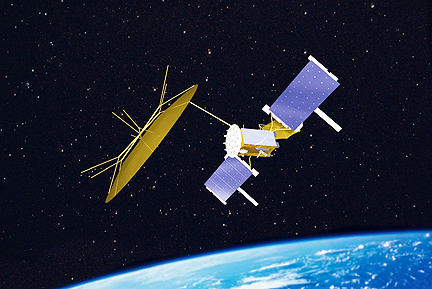 Designed and built by Lockheed Martin in Newtown, Pennsylvania, and delivered to the company's facilities in Sunnyvale, California, the module features a wideband code division multiple access payload that incorporates advanced technology to provide a 10-fold increase over legacy UHF SATCOM in the number and capacity of satellite links. These technologies will support new mobile satellite terminals that are under development for the Joint Tactical Radio System. The module also includes a legacy UHF payload provided by Boeing Defense, Space and Security, El Segundo, California, that is compatible with more than 10,000 deployed UHF SATCOM terminals that will transition to MUOS as existing UHF Follow-on (UFO) satellites reach the end of their on-orbit life.
Designed and built by Lockheed Martin in Newtown, Pennsylvania, and delivered to the company's facilities in Sunnyvale, California, the module features a wideband code division multiple access payload that incorporates advanced technology to provide a 10-fold increase over legacy UHF SATCOM in the number and capacity of satellite links. These technologies will support new mobile satellite terminals that are under development for the Joint Tactical Radio System. The module also includes a legacy UHF payload provided by Boeing Defense, Space and Security, El Segundo, California, that is compatible with more than 10,000 deployed UHF SATCOM terminals that will transition to MUOS as existing UHF Follow-on (UFO) satellites reach the end of their on-orbit life.
Over the next few months, Lockheed Martin will complete the final test verification phase on the system module, integrate it with the spacecraft propulsion core module and other space vehicle components, and begin environmental and acceptance testing of the fully integrated space vehicle. The first MUOS satellite has completed Passive Intermodulation testing and is currently undergoing electromagnetic interference/electromagnetic compatibility testing in support of the Spacecraft Level Baseline Integrated System Test (BIST). BIST testing will characterize the overall performance of the fully integrated MUOS spacecraft and establish a performance baseline prior to entering the environmental test phase, which includes acoustic and thermal vacuum testing. The first MUOS satellite, along with the associated ground system provided by General Dynamics C4 Systems, Scottsdale, Arizona, is scheduled for on-orbit hand-over to the Navy in 2011.

